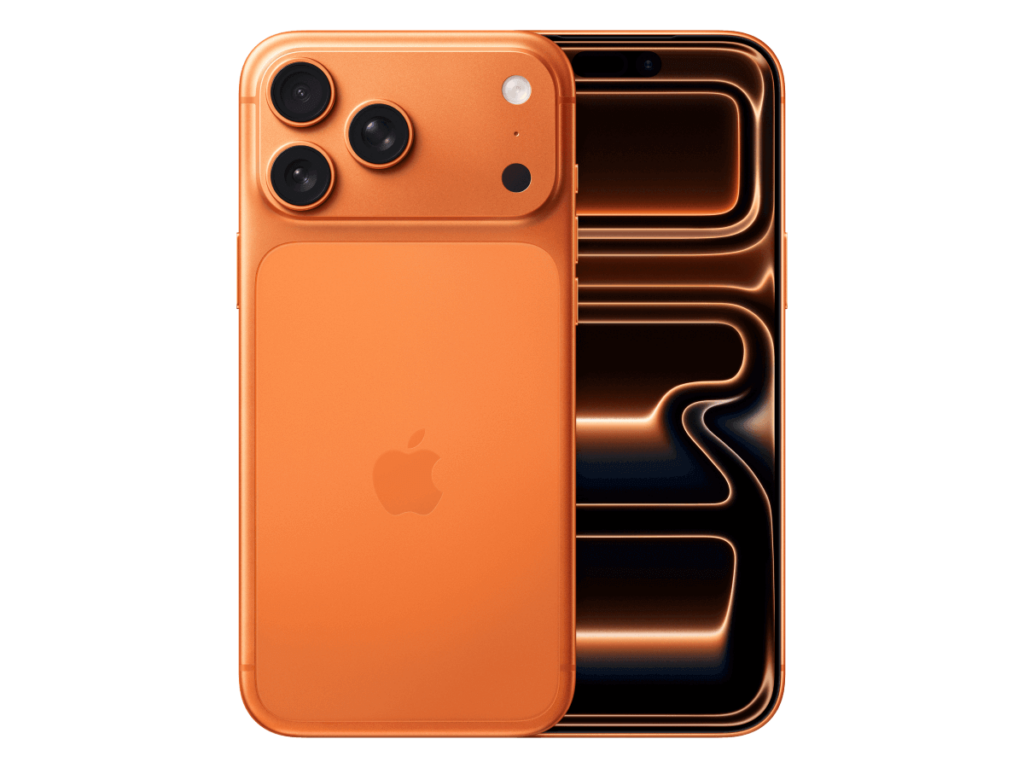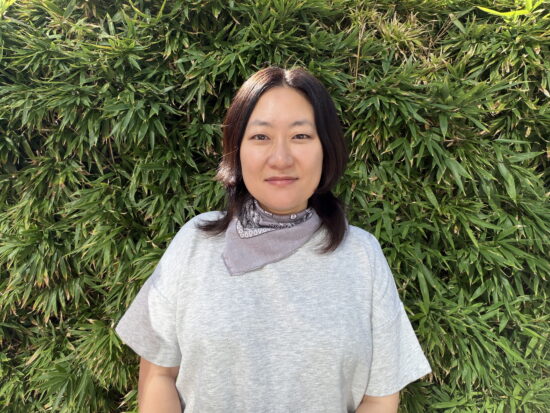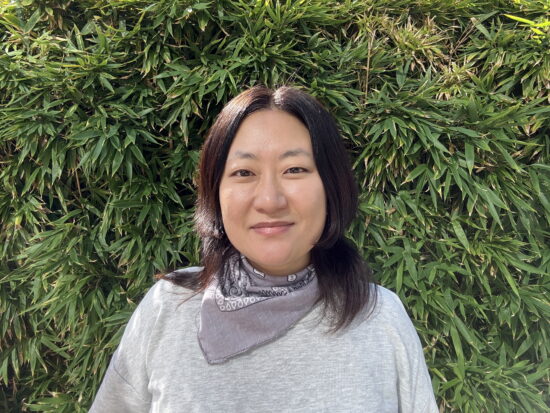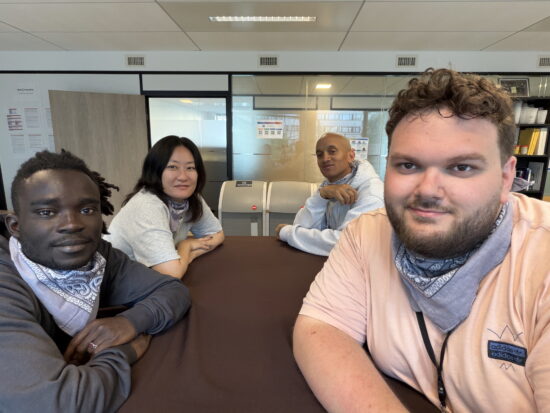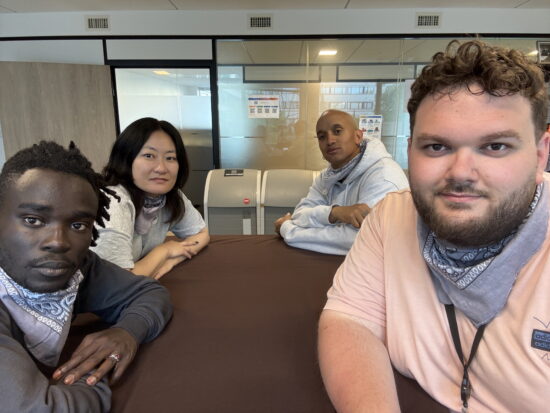We put the Apple iPhone 17 Pro through our rigorous DXOMARK Selfie test suite to measure its performance in photo and video from an end-user perspective. This article breaks down how the device fared in a variety of tests and several common use cases and is intended to highlight the most important results of our testing with an extract of the captured data.
Overview
Key front camera specifications:
- 18MP sensor
- f/1.9-aperture lens
- Autofocus
- 4K video at 24/25/30/60 fps, 1080p at 25/30/60/120 fps (4K at 30 fps tested)
Scoring
Sub-scores and attributes included in the calculations of the global score.
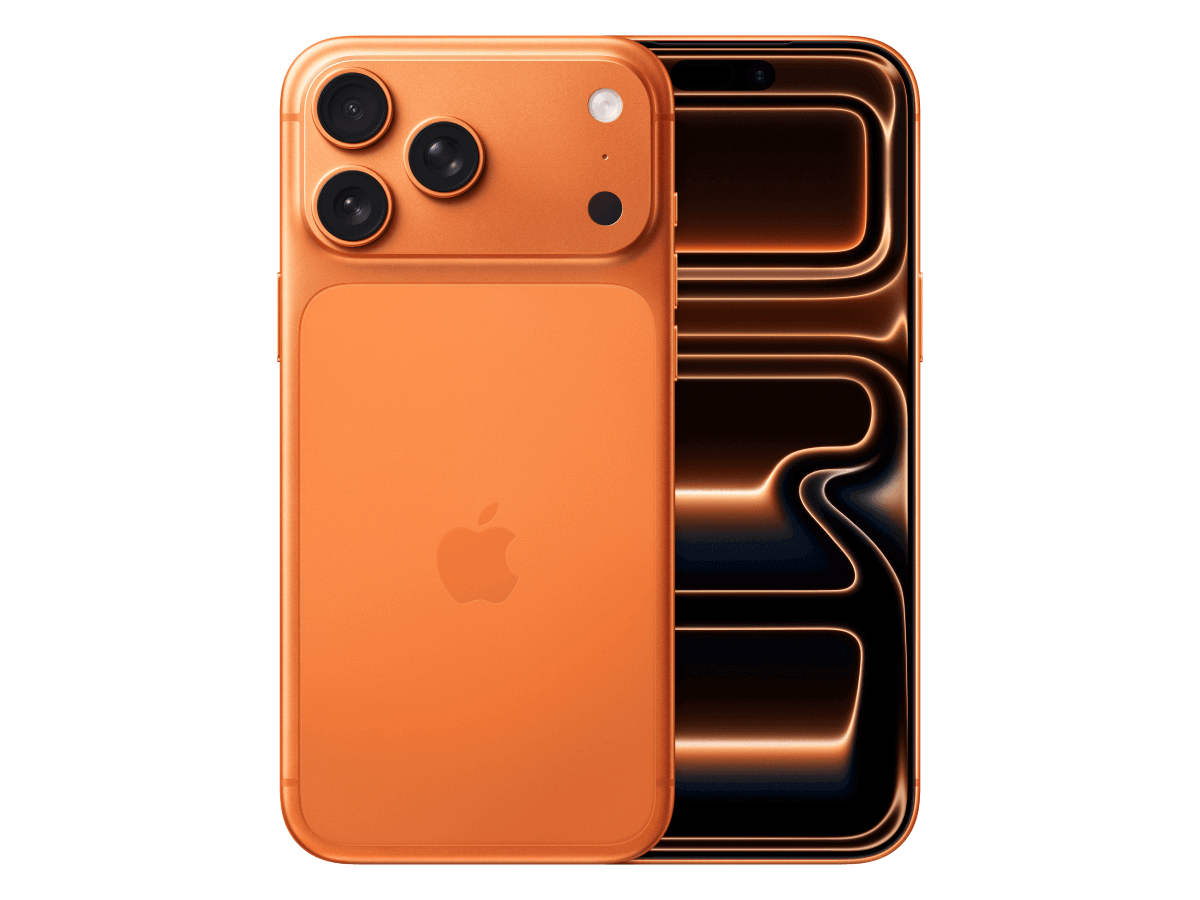
Apple iPhone 17 Pro


 1st
1st
 1st
1st
Pros
- Accurate target exposure and wide dynamic range for photo and video
- Nice color rendering
- Accurate focus, wide depth-of-field well suited for group portrait stills and videos
- Generally accurate depth estimation in bokeh mode, and overall pleasant bokeh effect
Cons
- Skin tones impacted by warm color casts, occasional slightly too abrupt white balance transitions in video mode
- Noise in flash shots, especially in the corners
- Occasional lack of detail, especially on moving subjects
- Image stabilization on the subject could be better, both when standing still and when walking during recording
The Apple iPhone 17 Pro delivers an outstanding performance in the DXOMARK Selfie tests and takes the top spot in our smartphone front camera ranking. It also outperforms its predecessor 16 Pro Max by 3 points. This improvement is driven by a redesigned 18MP Center Stage front camera, featuring the first square image sensor on an iPhone camera. The new sensor design allows for consistent framing, independent from the orientation of the device, and offers a field of view that is wider than on most competing devices, providing greater flexibility in terms of framing and when capturing group selfies.
In addition, the output resolution has been increased from 12 to 18MP in full field of view mode. With the tighter field of view, which is best for solo selfies, image size remains at 7MP. The hardware changes are combined with refined image processing algorithms for a well-rounded and consistent selfie shooting experience in both photo and video modes.
Test summary
About DXOMARK Selfie tests: For scoring and analysis, DXOMARK engineers capture and evaluate more than 1,500 test images both in controlled lab environments and in outdoor, indoor and low-light natural scenes, using the front camera’s default settings. The photo protocol is designed to take into account the user’s needs and is based on typical shooting scenarios, such as close-up and group selfies. The evaluation is performed by visually inspecting images against a reference of natural scenes, and by running objective measurements on images of charts captured in the lab under different lighting conditions from 1 to 1,000+ lux and color temperatures from 2,300K to 6,500K. For more information about the DXOMARK Selfie test protocol, click here. More details on how we score smartphone cameras are available here. The following section gathers key elements of DXOMARK’s exhaustive tests and analyses .Full performance evaluations are available upon request. Please contact us on how to receive a full report.
In photo mode, the iPhone 17 Pro maintains the high standards set by its predecessor, with an overall excellent and slightly improved performance. Target exposure is consistently accurate, and the wide dynamic range ensures well-balanced images, even in challenging light conditions. Depth-of-field is well suited for group portraits, thanks to intelligent subject detection, which can widen the field of view when needed. The bokeh mode offers generally accurate depth estimation and a nice looking blur effect with good subject isolation.
The front camera’s square sensor contributes to consistent framing and helps preserve texture in most conditions. Detail retention can be slightly inconsistent, especially on moving elements in the frame, but the texture/noise trade-off is generally better than on the predecessor iPhone 16 Pro Max. Warm color casts occasionally impact skin tone accuracy in some sunny outdoor scenes, but in low light white balance is generally very natural and accurate. Flash performance remains an area for improvement, with visible noise in the corners and reduced detail in low light flash scenes.

Exposure
Apple iPhone 17 Pro
99

Color
Apple iPhone 17 Pro
110
Exposure and color are the key attributes for technically good pictures. For exposure, the main attribute evaluated is the brightness of the face(s) in various use cases and light conditions. Other factors evaluated are the contrast and the dynamic range, eg. the ability to render visible details in both bright and dark areas of the image. Repeatability is also important because it demonstrates the camera's ability to provide the same rendering when shooting consecutive images in a row.
For color, the image quality attributes analyzed are skin-tone rendering, white balance, color shading, and repeatability.
Autofocus tests evaluate the accuracy of the focus on the subject’s face, the repeatability of an accurate focus, and the depth of field. While a shallow depth of field can be pleasant for a single-subject selfie or close-up shot, it can be problematic in specific conditions such as group selfies; both situations are tested. Focus accuracy is also evaluated in all the real-life images taken, from 30cm to 150cm, and in low light to outdoor conditions.

Texture
Apple iPhone 17 Pro
79
Texture tests analyze the level of details and the texture of subjects in the images taken in the lab as well as in real-life scenarios. For natural shots, particular attention is paid to the level of details in facial features, such as the eyes. Objective measurements are performed on chart images taken in various lighting conditions from 1 to 1000 lux and different kinds of dynamic range conditions. The charts used are the proprietary DXOMARK chart (DMC) and the Dead Leaves chart.

Noise
Apple iPhone 17 Pro
94
Noise tests analyze various attributes of noise such as intensity, chromaticity, grain, and structure on real-life images as well as images of charts taken in the lab. For natural images, particular attention is paid to the noise on faces, but also on dark areas and high dynamic range conditions. Objective measurements are performed on images of charts taken in various conditions from 1 to 1000 lux and different kinds of dynamic range conditions. The chart used is the DXOMARK Dead Leaves chart and the standardized measurement such as Visual Noise derived from ISO 15739.

Artifacts
Apple iPhone 17 Pro
91
The artifacts evaluation looks at lens shading, chromatic aberrations, distortion measurement on the Dot chart and MTF, and ringing measurements on the SFR chart in the lab. Particular attention is paid to ghosting, quantization, halos, and hue shifts on the face among others. The more severe and the more frequent the artifact, the higher the point deduction on the score. The main artifacts observed and corresponding point loss are listed below.
Bokeh is tested in one dedicated mode, usually portrait or aperture mode, and analyzed by visually inspecting all the images captured in the lab and in natural conditions. The goal is to reproduce portrait photography comparable to one taken with a DSLR and a wide aperture. The main image quality attributes paid attention to are depth estimation, artifacts, blur gradient, and the shape of the bokeh blur spotlights. Portrait image quality attributes (exposure, color, texture) are also taken into account.
DXOMARK engineers capture and evaluate more than 2 hours of video in controlled lab environments and in natural low-light, indoor and outdoor scenes, using the front camera’s default settings. The evaluation consists of visually inspecting natural videos taken in various conditions and running objective measurements on videos of charts recorded in the lab under different conditions from 1 to 1000+ lux and color temperatures from 2,300K to 6,500K.
Improvements over the previous generation iPhone are more noticeable in video mode than they are for photos. The iPhone 17 Pro delivers accurate video exposure across a wide range of light conditions, with a wide dynamic range and nice color rendering. The autofocus system is responsive and works reliably. Depth-of-field is wider than on the iPhone 16 Pro Max and helps maintain sharpness across the scene, even with moving subjects.
The new Center Stage feature allows for dynamic subject tracking during video calls and recordings, in order to keep faces centered and in focus. Texture rendering has improved slightly, and stabilization is more effective than on the predecessor, especially during handheld recording. However, motion compensation could still be refined, both when standing still and when walking during video capture. Our testers also observed occasional focus breathing and abrupt white balance shifts in some sample clips.
Overall, the video experience feels smoother and more stable than on the previous iPhone generation, though, making the 17 Pro a great choice for selfie video recording in both casual and professional settings.

Color
Apple iPhone 17 Pro
90
Exposure tests evaluate the brightness of the face and the dynamic range, eg. the ability to render visible details in both bright and dark areas of the image. Stability and temporal adaption of the exposure are also analyzed. Image-quality color analysis looks at skin-tone rendering, white balance, color shading, stability of the white balance and its adaption when light is changing.

Texture
Apple iPhone 17 Pro
97
Texture tests analyze the level of details and texture of the real-life videos as well as the videos of charts recorded in the lab. Natural video recordings are visually evaluated, with particular attention paid to the level of detail on the facial features. Objective measurements are performed of images of charts taken in various conditions from 1 to 1000 lux. The chart used is the Dead Leaves chart.

Noise
Apple iPhone 17 Pro
83
Noise tests analyze various attributes of noise such as intensity, chromaticity, grain, structure, temporal aspects on real-life video recording as well as videos of charts taken in the lab. Natural videos are visually evaluated, with particular attention paid to the noise on faces. Objective measurements are performed on the videos of charts recorded in various conditions from 1 to 1000 lux. The chart used is the DXOMARK visual noise chart.
Stabilization evaluation tests the ability of the device to stabilize footage thanks to software or hardware technologies such as OIS, EIS, or any others means. The evaluation looks at overall residual motion on the face and the background, smoothness and jellow artifacts, during walk and paning use cases in various lighting conditions. The video below is an extract from one of the tested scenes.

Artifacts
Apple iPhone 17 Pro
92
Artifacts are evaluated with MTF and ringing measurements on the SFR chart in the lab as well as frame-rate measurements using the LED Universal Timer. Natural videos are visually evaluated by paying particular attention to artifacts such as quantization, hue shift, and face-rendering artifacts among others. The more severe and the more frequent the artifact, the higher the point deduction from the score. The main artifacts and corresponding point loss are listed below


